A Powerful and Longlasting Stink Bomb
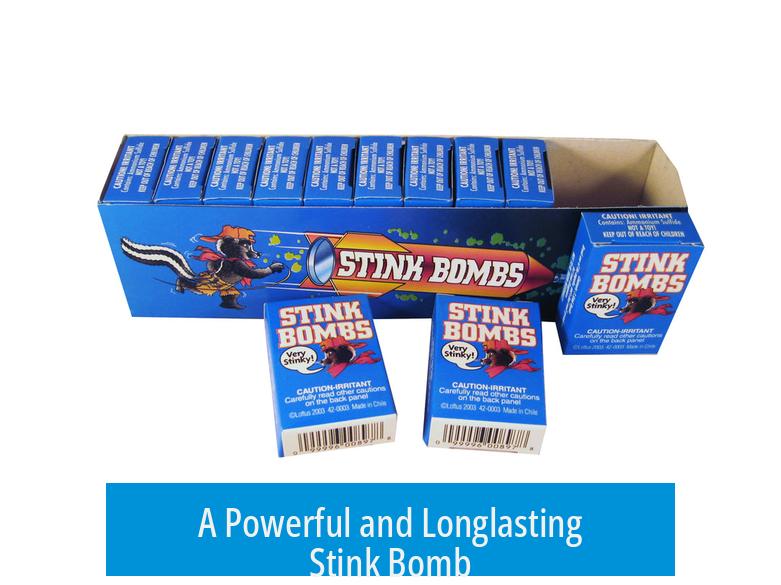
A powerful and longlasting stink bomb uses chemicals with strong and persistent odors such as organic acids, thiols, and compounds like cadaverine to deliver intense and lasting malodor effects. These substances combine potency and longevity to create a stink bomb that can affect an environment for hours or even days.
Chemicals with Strong Odors for Stink Bombs
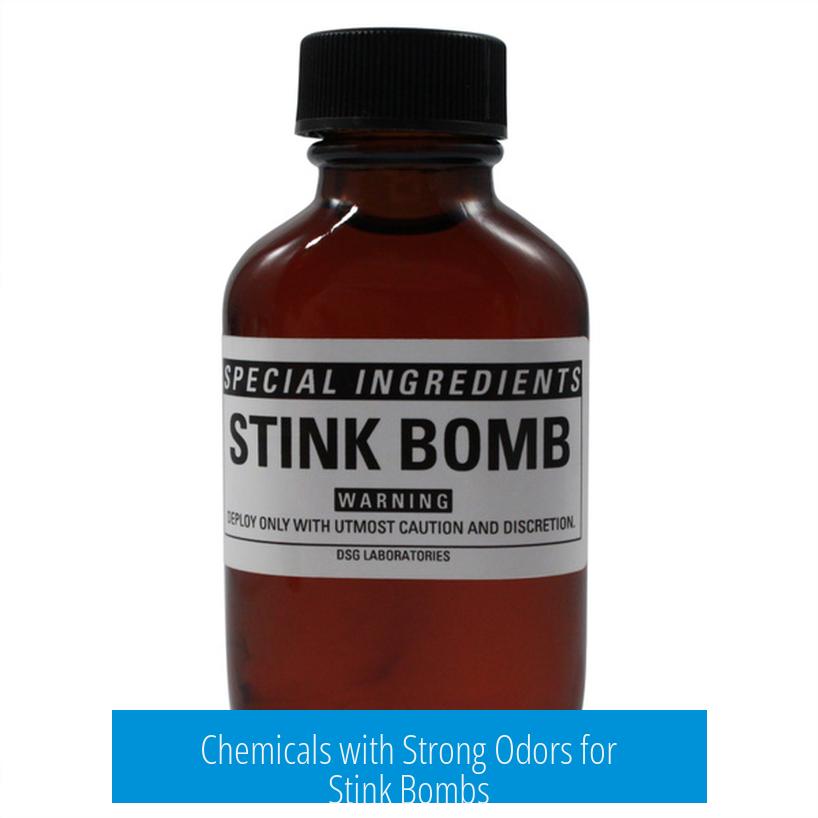
- Organic Acids: Butyric acid and valeric acid emit rancid, cheesy feet-like smells. Their low volatility and unpleasant odor make them popular choices for longlasting stink bombs.
- Thiols and Mercaptans: These sulfur-containing compounds mimic burnt, offensive odors. They are highly potent even in very low concentrations.
- Classical Malodorants: Cadaverine, putrescine, and skatole replicate the smell of decay and rot, adding a bio-organic intensity that can persist if released in sufficient amounts.
Characteristics of Effective Stink Bombs
| Factor | Description |
|---|---|
| Longevity | Compounds resembling decomposing organic matter provide smells lasting hours to weeks. Proper choice ensures lingering odor without health risks. |
| Potency | Strong odors emerge quickly and irritate respiratory senses, causing coughing and gagging. Examples include thiols released from glass capsules. |
| Safety | Use of toxicologically safe quantities is crucial. Thiols and acid derivatives are potent but require careful dosing to avoid harm. |
Anecdotal Evidence from Workplace Use
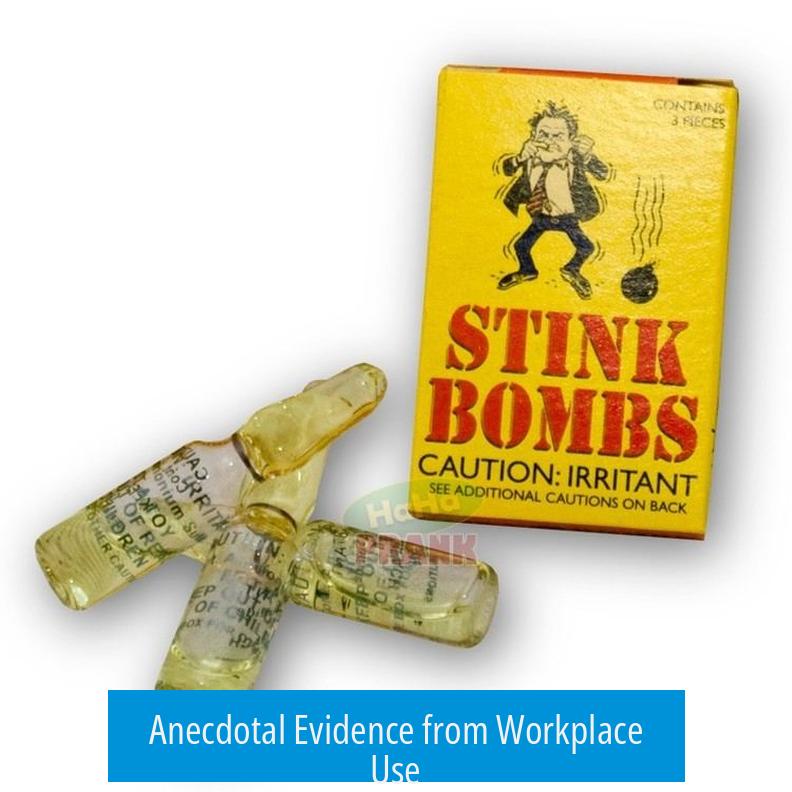
Workers have used glass capsules containing strong-smelling thiols as prank stink bombs. When broken under a supervisor’s pressure mat, the released odor causes immediate coughing and gagging. The effect begins within seconds and can last several hours, making the workplace environment uncomfortable and drawing quick reactions.
This example illustrates how effective small amounts of potent malodorants can be in producing an intensely unpleasant atmosphere for short durations.
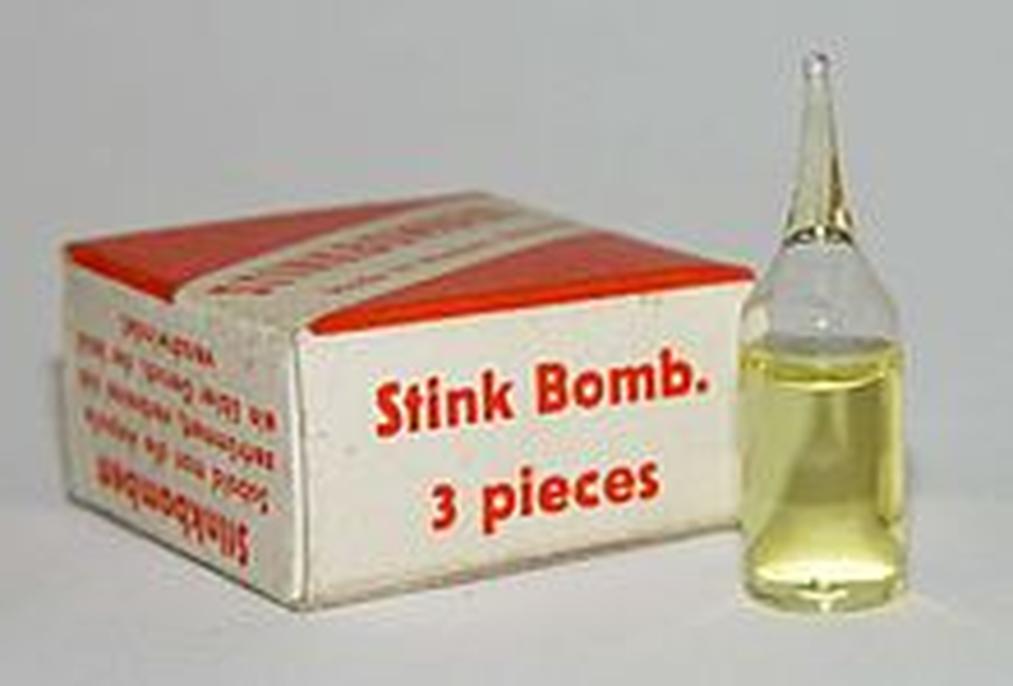
Key Takeaways
- Strong stink bombs rely on organic acids, thiols, and decomposition-related compounds.
- Longevity ranges from hours to weeks depending on chemical properties.
- Potency causes immediate irritation and annoyance.
- Safe handling and dosing mitigate risks of toxic exposure.
- Practical use involves small containers like glass capsules to control release.
What Makes a Powerful and Longlasting Stink Bomb? The Science of Stink Unveiled
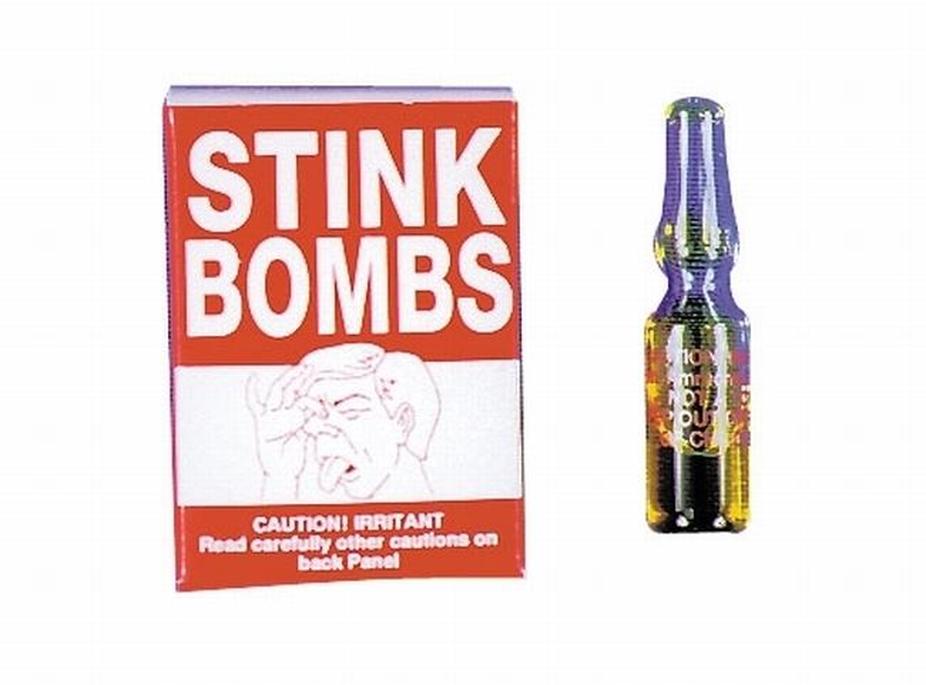
If you’ve ever wondered what gives a stink bomb its punch and why some linger longer than your neighbor’s burnt dinner, here’s the straight answer: a powerful and longlasting stink bomb relies on a specific cocktail of chemical weapons that are both potent and persistent, like butyric acid, mercaptans, and even compounds found in rotting flesh. Curious yet? Let’s peel back the layers of this fragrant mystery.
Stink bombs aren’t just about making a funny smell and running away giggling—they are clever combinations of smelliest substances, engineered to hit the nose and stick around. But what exactly goes into these olfactory grenades?

Organic Acids: The Pungent Bedrock
Think of organic acids as the foundational stink creators. Butyric acid, the notorious culprit behind the smell of rancid butter and vomit, is a classic choice. Alongside it, hexanoic and valeric acids step in to deepen the offensive. Valeric acid, for example, famously smells like cheesy feet—*especially* when warmed up. Imagine that aroma wafting through a room; it’s guaranteed to turn heads (or make people flee).
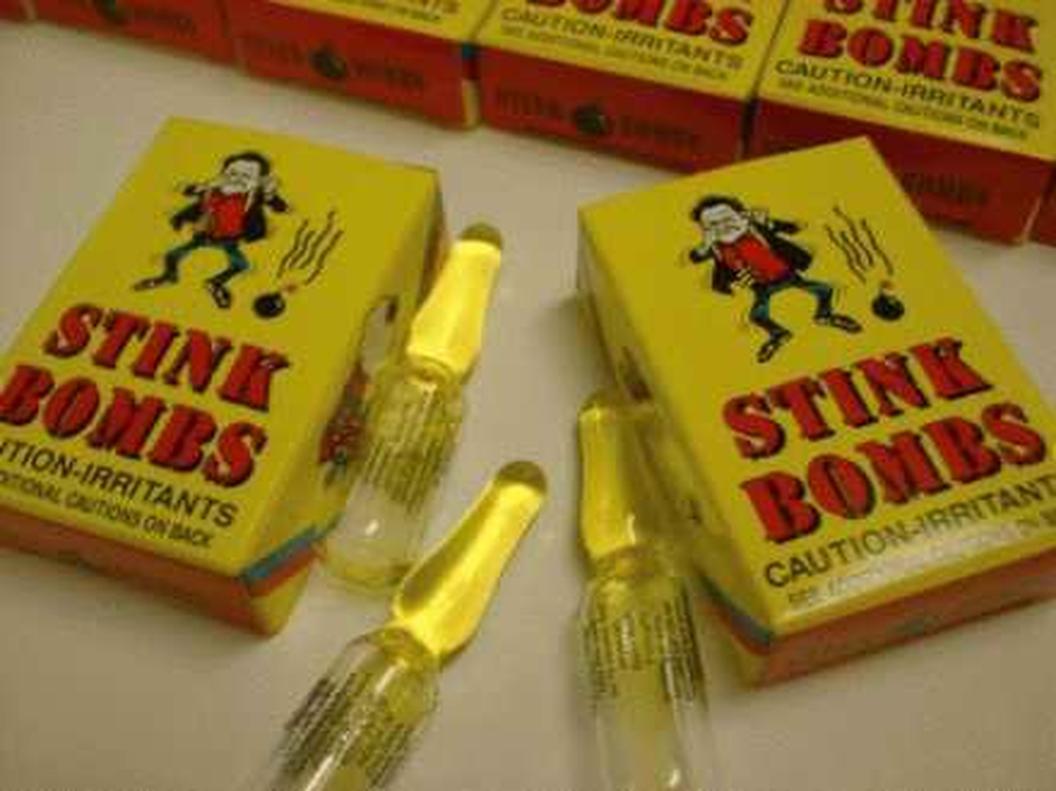
Thiols and Mercaptans: The Burnt Arsehole Brigade
Next in the stink lineup are thiols and mercaptans. These are sulfur-containing compounds that smell… well, like burnt arsehole, to put it bluntly. They are powerful, intense, and quick to provoke physical reactions such as coughing and gagging—perfect for anyone daring enough to use a stink bomb responsibly. While their strength is legendary, they usually hang around only a few hours but are enough to send even the toughest supervisor running for fresh air.
Classical Smelly Compounds: The Rotting Corpses’ Signature
If you really want your stink bomb to pack a punch and last longer, you dive into some of the classical smelly compounds: cadaverine, putrescine, and skatole. These chemicals are the olfactory fingerprints of rotting flesh and decay. Their potency isn’t just about the gag factor; these odors can linger for days or even weeks if not cleaned up.
Longevity and Potency: The Holy Grail of Stink Bombs
What sets a longlasting stink bomb apart is its ability to *stay* stinky. Rotting corpse smells can hang around for weeks without fading, making these compounds ideal for extended mischief or prolonged prank wars. But beware—the trade-off is in safety. It’s crucial to use these chemicals in controlled, tiny quantities to avoid harm.
On the other end of the spectrum, glass stink bombs packed with mercaptans may only last 3-4 hours but deliver an intense, immediate shock. Their effect is powerful enough to cause coughing, gagging, or even instant vomiting, which either means you win the prank or go down in office legend.
The Ultimate Office Prank: A Tale of Mercaptan Mayhem
Allow me to share a tale from the frontlines of stink warfare. Back in the day, some crafty workers used glass stink bombs filled with mercaptans hidden under their supervisor’s pressure mat. When stepped on, the glass shattered, releasing a vile cloud that took about 30 seconds to hit full force.
The result? The supervisor nearly keeled over, gagging and coughing, leaving the office in confusion and horror. Meanwhile, the pranksters erupted in laughter, reveling in the stench chaos they had unleashed. Those mercaptan stink bombs might have lasted only a few hours, but those moments of pure olfactory terror were unforgettable.
Safety First: Prank Without Peril
No discussion of stink bombs is complete without a warning. These chemicals are potent and can jerk you right out of your nose’s comfort zone. But when used sparingly and safely, stink bombs offer harmless fun. Quantity matters—a drop too many and the joke might backfire, causing severe discomfort rather than lighthearted laughter.
So, What Makes the *Best* Powerful and Longlasting Stink Bomb?
- Combining organic acids like butyric and valeric acid for that deep, cheesy, rotten smell.
- Adding mercaptans and thiols to punch up the potency, ensuring instant reactions.
- Incorporating cadaverine or putrescine to extend the offensive bouquet for days.
- Using minimal amounts to keep it safe, because no one wants a hazardous prank gone wrong.
Armed with this knowledge, you can appreciate the chemistry behind a stink bomb’s power and longevity. It’s not just about being nasty; it’s about orchestrating an unforgettable, if foul, sensory experience that lasts.
Have You Ever Experienced a Stink Bomb Nightmare?
Imagine walking into a room and being blindsided by a smell so vile it momentarily knocks the wind out of you. That’s the power of these cleverly engineered stink bombs. Next time you encounter such a smell, you’ll know exactly what chemistry wizardry might be at play.
Whether for learning, pranking, or pure curiosity, the powerful and longlasting stink bomb is a fascinating blend of science and, well, stench. Just remember—use with caution and respect, or you might end up as the one running from the stink instead of getting the last laugh!
What chemicals create a powerful stink bomb smell?
Organic acids like butyric and valeric acid are strong. Thiols, mercaptans, and compounds like cadaverine and putrescine also work well. These chemicals produce intense, unpleasant odors that last.
How long can a stink bomb smell last?
Some odors can last for weeks, similar to the smell of rotting corpses. Common glass stink bombs typically last 3-4 hours, but their initial impact is very strong.
Are stink bombs with thiols safe to use?
Thiols are used in small quantities to ensure safety. Though their smell is very strong and unpleasant, careful handling prevents harm.
Can you describe an effective stink bomb prank?
One story tells of placing multiple small glass stink bombs under a supervisor’s pressure mat. When stepped on, the bombs released nasty odors, causing coughing and gagging quickly.
What makes a stink bomb’s odor so potent?
Compounds like cadaverine and mercaptans are very intense. The sudden release of such chemicals causes immediate strong reactions, including nausea in some people.


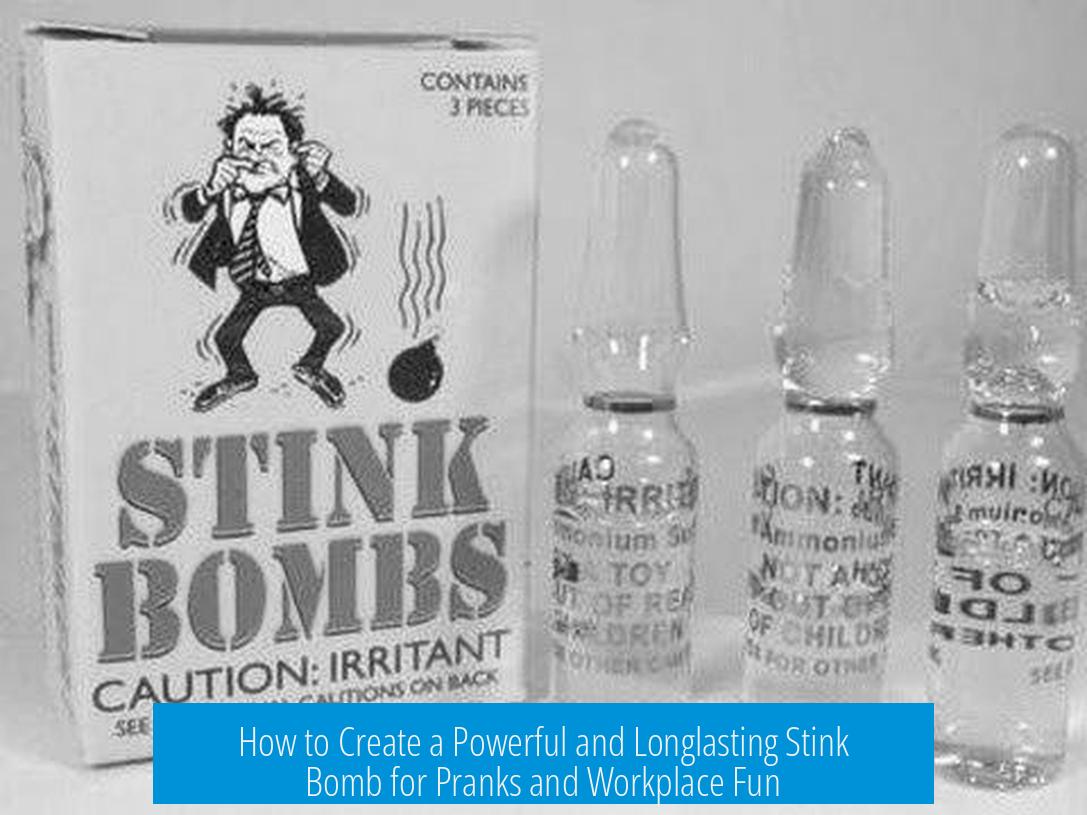


Leave a Comment